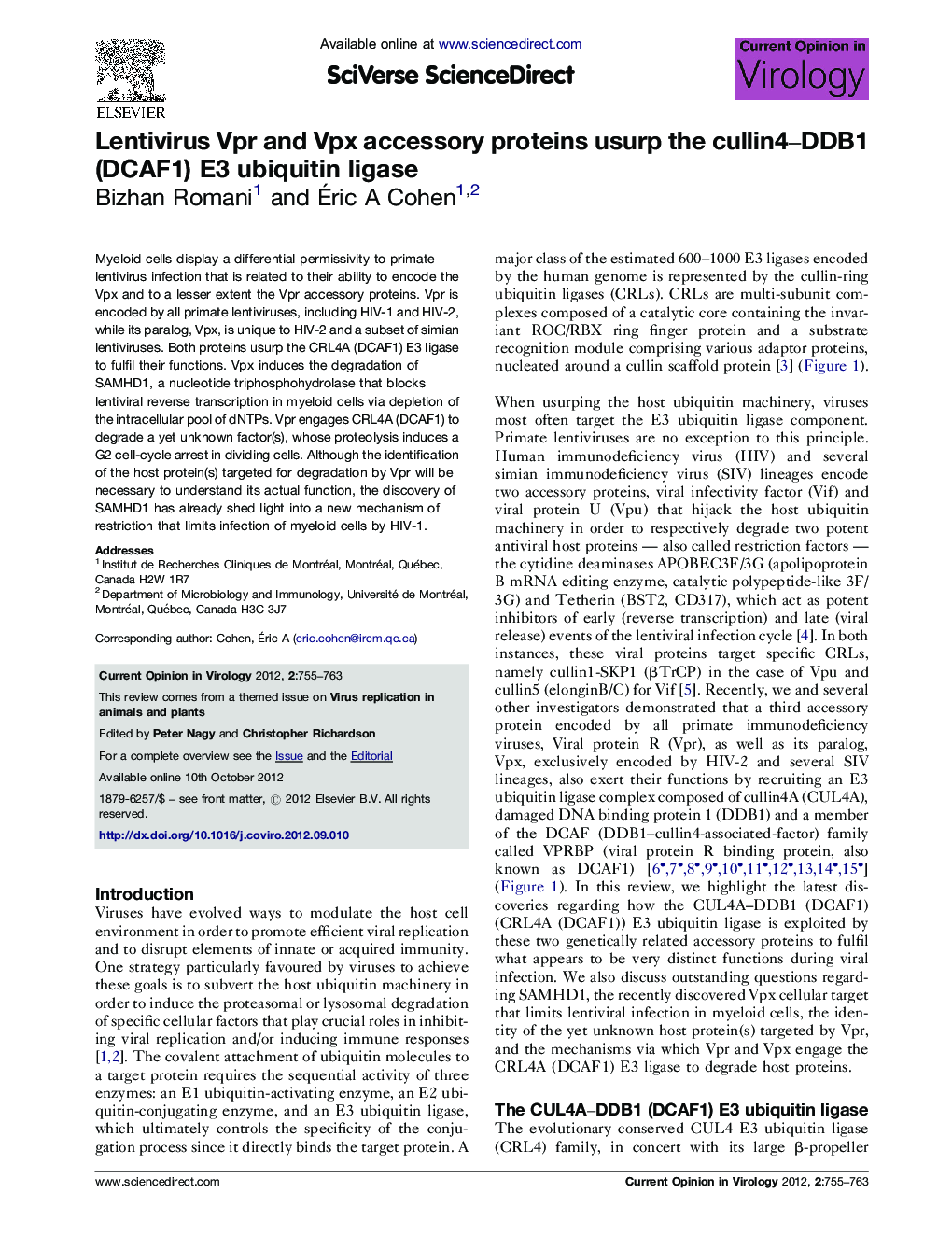| Article ID | Journal | Published Year | Pages | File Type |
|---|---|---|---|---|
| 2473507 | Current Opinion in Virology | 2012 | 9 Pages |
Myeloid cells display a differential permissivity to primate lentivirus infection that is related to their ability to encode the Vpx and to a lesser extent the Vpr accessory proteins. Vpr is encoded by all primate lentiviruses, including HIV-1 and HIV-2, while its paralog, Vpx, is unique to HIV-2 and a subset of simian lentiviruses. Both proteins usurp the CRL4A (DCAF1) E3 ligase to fulfil their functions. Vpx induces the degradation of SAMHD1, a nucleotide triphosphohydrolase that blocks lentiviral reverse transcription in myeloid cells via depletion of the intracellular pool of dNTPs. Vpr engages CRL4A (DCAF1) to degrade a yet unknown factor(s), whose proteolysis induces a G2 cell-cycle arrest in dividing cells. Although the identification of the host protein(s) targeted for degradation by Vpr will be necessary to understand its actual function, the discovery of SAMHD1 has already shed light into a new mechanism of restriction that limits infection of myeloid cells by HIV-1.
► HIV-1 Vpr induces a G2 cell cycle arrest. ► Vpr-mediated G2 arrest requires engagement of Vpr to the CRL4A (DCAF1) E3 ligase. ► Vpr cellular target(s) remains unknown. ► HIV-2/SIVsm Vpx recruits the CRL4A (DCAF1) E3 ligase to induce SAMHD1 degradation. ► SAMHD1 blocks reverse transcription in myeloid cells by depleting the pool of dNTPs.
